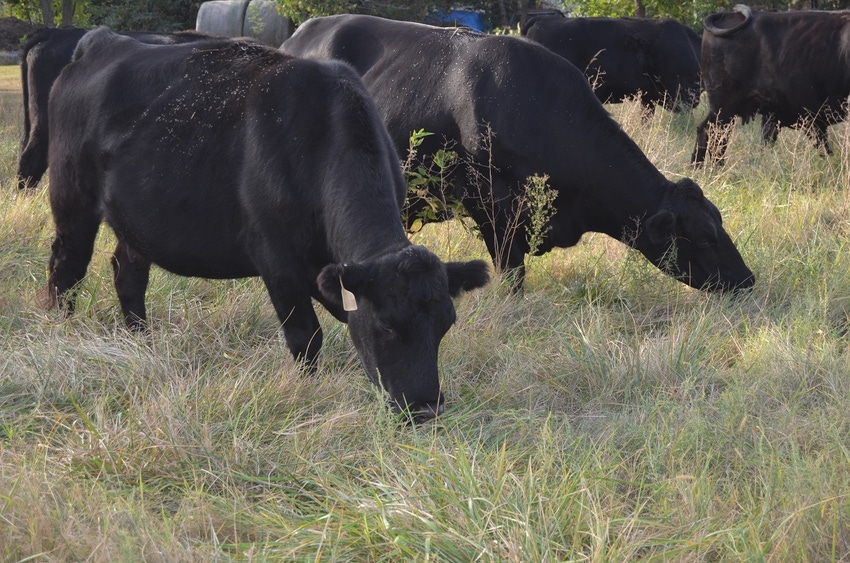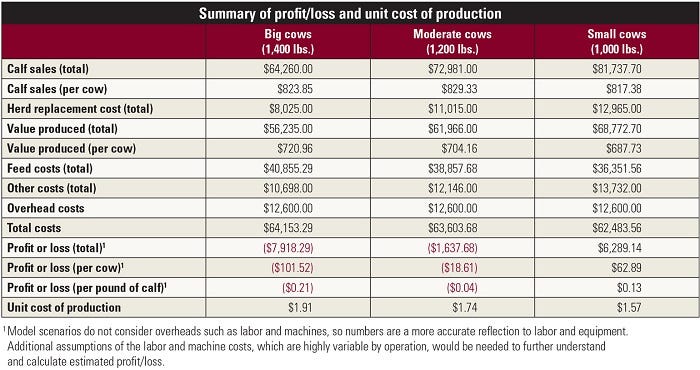
Researchers at Wyoming three years ago published a paper showing small cows on the range made more beef and potentially more profit than big cows. Now they have confirmed the economics.
Beef Producer wrote about that study in August 2016 in a story titled "Could the smallest cows make the most profit?"
In May of this year Wyoming researchers released a report titled "Beef Cow Size: Industry Trends, Economics, and Implications for Grazing Wyoming Rangelands." That used the same basic data as the first study but applied economics to it. The new study showed a clear advantage in ranch profitability from the smaller cows.
When the research team summarized profit and loss, as returns to labor and equipment, and unit cost of production, they estimated total herd profit would be $6,289.14 for the small cow herd and there would be a total loss of $7,918.29 for the big-cow herd. This was based on total
pounds weaned would be 48,627 pounds for the small cows, 42,930 pounds for the moderate cows and 37,800 pounds for the large cows.
The small cows were 1,000 pounds, the moderate cows were 1,200 pounds and the large cows were 1,400 pounds.
Further, on a per cow basis they estimated profit would be $62.89 per small cow, loss would be $18.61 per moderate cow and loss would be $101.52 per big cow. On a per-pound-of-calf basis, researchers estimate profit would be 13 cents for small cows, a loss of 4 cents for moderate cows and a loss of 21 cents for big cows.
Additionally, the estimated unit cost of production was $1.57 per small cow, $1.74 per moderate cow and $1.91 per big cow.
Actual data from the research ranch suggests all the calves would be very similar size and all were valued at $1.70 per pound. The big cows at 1,400 pounds produced 525-pound calves. The medium cows at 1,200 pounds produced 530-pound calves. The small cows at 1,000 pounds produced 519-pound calves.
This set up gross weaned-calf values of $81,737.70 for the small cow herd, $72,981.00 for the moderate cow herd and $64,260.00 for the big cow herd.
The cattle weights and performances, as was the case in the original study, were based on performance of the cows stocked on the University of Wyoming's McGuire Ranch, north of Laramie. The researchers assumed they had a limited amount of grass available that would provide adequate feed for 100 head of small cows, 88 moderate cows or 78 big cows based on their energy requirements and forage consumption, which increases as cows get bigger.

Other considerations
Besides these basic comparisons of size versus production and profits, the researchers brought forth several other considerations for cow-calf operators to consider.
First, they reminded producers that not only do larger cows require more nutrients (forage tonnage) for maintenance, but so do higher-milking cows. Cows producing too much milk have become very much the standard these days. They noted recent research has shown that smaller cows have the potential to be more efficient calf producers because their calves gain more weight in relation to dam weight when compared to larger cows.
Larger cows likely have lower reproductivity, as well, they said. They noted Oklahoma research that showed 1,400-pound cows produce one less calf in their lifetimes than 1,100-pound cows and larger cows may have a reduced calving rate of up to 7% lower.
Probably just as important, the researchers also noted that as cow size has crept upward over the last 40 years or more, stocking rates have not really been reduced to match forage production to forage consumption. This has aggravated the decline of rangelands.
Finally, the researchers noted their study is based on real data from an extensive Wyoming range cattle operation that is managed to minimize input costs. Their assumptions might not be applicable to all operations, they admit.
Wyoming economics of cow size
http://www.wyoextension.org/agpubs/pubs/B-1343_beef-cow-size_web.pdf
August 2016Beef Producer story on initial Wyoming study
https://www.farmprogress.com/story-smallest-cows-make-profit-10-144813
About the Author(s)
You May Also Like




